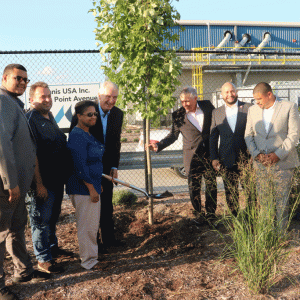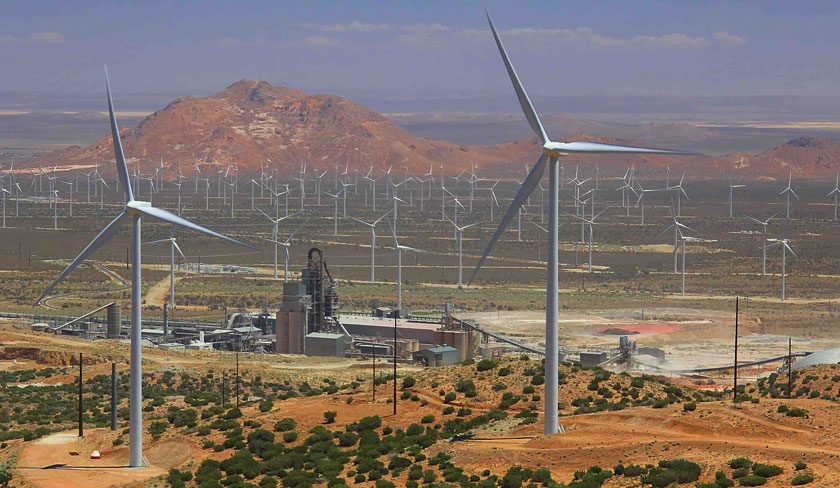New York City Council and community organization representatives joined McInnis Cement executives to celebrate the official opening of the producer’s 44,000-metric-ton capacity terminal in the Bronx – the first new industrial maritime project built on the South Bronx’s waterfront since the 1960s.
 According to McInnis officials, the 100,000-sq.-ft., 24/7 terminal is the ideal port location for storing and distributing cement in New York City and beyond. Built in the Hunts Point section of the South Bronx, it distributes powder from the company’s Port-Daniel—Gascons plant in eastern Quebec. Since 90 percent of the plant’s cement will be delivered via ships, traffic is projected to decrease significantly across bridges and roads. This is expected to eliminate 25,000 one-way truck trips and remove more than two million truck miles off the roads across the region annually.
According to McInnis officials, the 100,000-sq.-ft., 24/7 terminal is the ideal port location for storing and distributing cement in New York City and beyond. Built in the Hunts Point section of the South Bronx, it distributes powder from the company’s Port-Daniel—Gascons plant in eastern Quebec. Since 90 percent of the plant’s cement will be delivered via ships, traffic is projected to decrease significantly across bridges and roads. This is expected to eliminate 25,000 one-way truck trips and remove more than two million truck miles off the roads across the region annually.
“Our Bronx terminal is more than just a new facility. In addition to building a new cement company, our Hunts Point location is reactivating a working waterfront while balancing the needs of the community, environmental habitat and industry,” said Jean Moreau, president and chief executive officer, McInnis Cement. “Our goal was to set a new standard for development in the New York City harbor, placing a major industrial operation in harmony with a natural wildlife habitat and providing waterfront access for the citizens of the South Bronx.”
Concurrent with construction of cement transfer and storage structures, McInnis oversaw site remediation and removal of a century-old pier, plus installation of a wave attenuation structure, to augment three acres of wetlands supporting plant, bird and fish habitat. “While the terminal’s impact on local cement supply, employment, traffic and revitalization might be considered more than enough to justify the ambitious project, its impact on the local environment may prove to be its greatest reward,” said Tony Sneska, vice president, marketing & sales.
The McInnis Bronx terminal is the first project to attain certification under the Waterfront Alliance’s new, national Waterfront Edge Design Guidelines (WEDG). The certification is viewed as the gold standard for resilient, ecologically-sound and accessible waterfront design. The free program offers a common language that allows design professionals, planners, government agencies and community advocates to work together toward the highest waterfront development standards.




